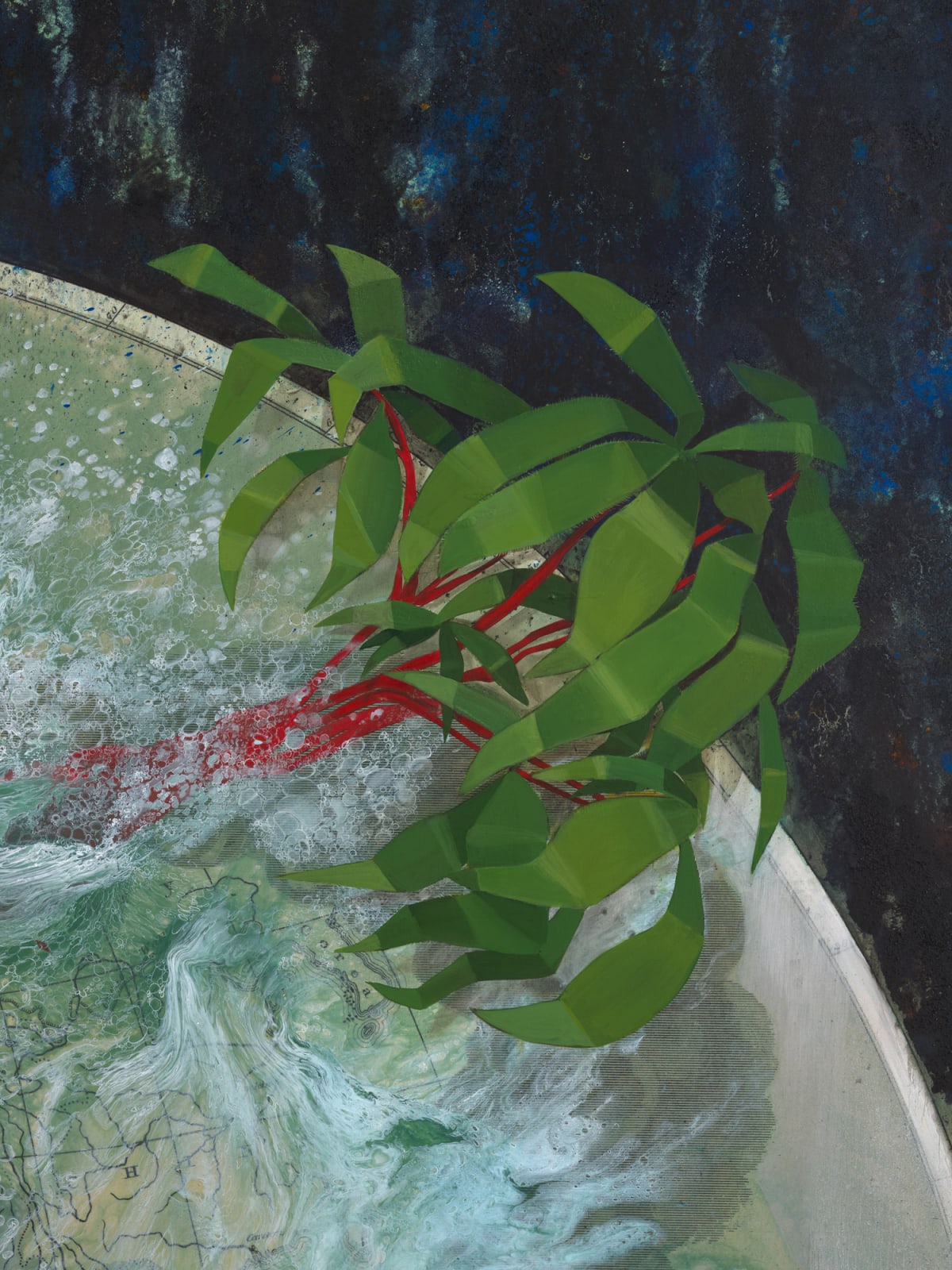-
Artworks
 Photograph: Phoebe d'Heurle.
Photograph: Phoebe d'Heurle.
 Photograph: Phoebe d'Heurle.
Photograph: Phoebe d'Heurle.
 Photograph: Phoebe d'Heurle.
Photograph: Phoebe d'Heurle.
 Photograph: Phoebe d'Heurle.
Photograph: Phoebe d'Heurle.
 Photograph: Phoebe d'Heurle.
Photograph: Phoebe d'Heurle.
Untitled (Baubo), 2020
Oil and acrylic on printed canvas86 3/4 x 132 3/4 x 1 5/8 in.
220.3 x 337 x 4 cmSoldFurther images
The central ciguapa figure in this work mounts an enlarged reproduction of an 1846 map depicting the Third Punic War: a conflict in 146 BC which resulted in the final...The central ciguapa figure in this work mounts an enlarged reproduction of an 1846 map depicting the Third Punic War: a conflict in 146 BC which resulted in the final destruction of Carthage, the enslavement of its population, and Roman hegemony over the western Mediterranean. The original document was sourced from an English atlas that sought to form a general view of “universal history” and illustrate the expansion of geographic knowledge over time. The feminine-archetypal ciguapa is a trickster from Dominican folklore who, for Báez, embodies the potential to defy oppressive convention and break through generations of karmic loads. Here, Báez casts her as a bathing figure, likened to the female nudes of Ingres’s The Turkish Bath (1852-1859). In opposition toward the idealized state of passivity or waiting that characterizes Ingres’ nudes, Báez’s hybrid ciguapa is active and self-possessed. The figure’s disposition takes cues from Baubo, the sexually-liberated Greek Goddess of Mirth, who jested with Demeter when she was mourning the loss of her daughter Persephone, lifting her skirt and flashing her, thereby bringing spring back into the world. By depicting the ciguapa playfully splashing her winding, tree-like body into the map’s composition, Báez challenges its assertion of this war’s colossal impact, and that of the territories it delineated—complicating linear and reductive approaches to understanding the past.Exhibitions
Shifting the Silence, SFMOMA, April 9 - September 5, 2022
Firelei Báez, James Cohan Tribeca, March 8 - April 25, 2020Publications
Golden, T., Respini, E., Godfrey, M., Acevedo-Yates, C., & Russell, L. (2022). Firelei Báez: To breathe full and free (D. Norr, Ed.). New York, NY: Gregory R. Miller & Co., pp. 240-41.









